| March 24, 2020 | Volume 16 Issue 12 |
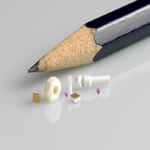 | Precision Ceramic and Glass Microcomponents
Goodfellow offers ceramic and glass microcomponents, both standard and precision-machined to customer specifications. Examples include ultra-thin glass microsheet for use as transparent substrates; precision spheres for use as precision spacers and optical components; micro optics such as prisms, lenses and windows; injection-molded ceramic microcomponents for surgical equipment and fiber optic applications; polished sapphire bearings and sub mm bore nozzles; and single and multi-bore capillary tubing with sub mm diameters.
Learn more: Finished Components and Finished Products. |
 | Top shelf: 2021 Porsche 911 Turbo S
Even though you may be stuck inside, you can still take a mighty fine ride in your mind. Why not go top shelf and choose the 2021 911 Turbo S -- the fastest and most powerful 911 yet? With a completely new engine, 640 hp, and updated adaptive aerodynamics, you'll be feeling fine and carefree, whether you pick the cabriolet or the coupe version.
Read the full article. |
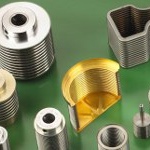 | What is electroforming? How does it actually work?
Electroplating may have been around for centuries, but only Servometer excels at manufacturing dynamic, convoluted bellows electroforms. Watch Servometer's five-step electroforming manufacturing process and learn how they are able to deliver electroformed components that feature extreme tolerances, complex geometries, lightweight construction, structural strength, and how they can be applied to a variety of applications.
Watch the video. |
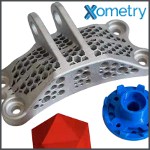 | The Xometry Complete Guide to 3D Printing
Interested in 3D printing but don't know where to start? Xometry has you covered. Their new, extensive guide outlines everything you need to know about 3D printing/additive manufacturing, its basics, getting started, and the top commercial 3D-printing processes and materials used today. Explore further and learn the advantages and disadvantages of 3D printing, and the trends in 3D printing for 2020.
Read the online Xometry guide. |
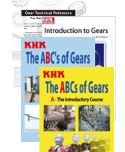 | Great Resources: ABCs of gears and more
Hungry for more mechanical knowledge? KHK USA takes you on a journey through the history and applications of gears in two information-packed, no-cost volumes called "The ABCs of Gears." Part A is aimed at beginners, while part B moves on to intermediate fare, such as types of gears and tooth forms, heat treatment, surface treatment, production methods, etc. Another mid-level text called "Introduction to Gears" and an in-depth "Gear Technical Reference" are also available, chock full of materials information and calculation examples and tables. Best of all, there is no registration for any of these valuable PDF resources. Thanks, KHK USA!
Click here to learn more. |
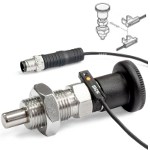 | Indexing plungers with position signal
Indexing plungers often fulfill safety functions, but this isn't the only time when it is important to obtain feedback about their position. A new stainless steel unit from JW Winco allows automated status checks. The GN 817.6 offers the familiar basic functionality of a proven indexing plunger but with the key addition of an integrated sensor. This reports the position of the plunger pin by means of an electrical signal over a cable connection terminating with an M8 standard connector. Very useful.
Learn more. |
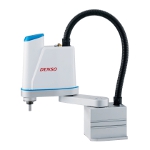 | New low-cost high-speed robot from DENSO
DENSO Robotics developed the entry-level LPH to meet the demand for precision robots needed for light-duty manufacturing applications. Equipment manufacturers who are new to automation, companies reinventing their product lines, and entrepreneurs launching new devices are among those who make up the growing market for high-quality robots that don't break the bank. Compact and lightweight, the LPH is a 4-axis selective compliance assembly robot arm (SCARA) built to handle a maximum payload of no more than 6.6 lb (3 kg) with a maximum arm reach of 1.3 ft (400 mm). When operated routinely at the highest rated payload, the LPH has a life cycle of up to five years. For lighter loads, the LPH has a longer life cycle.
Learn more. |
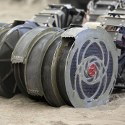 | NASA needs your help designing a Moon digger
Digging on the Moon is a hard job for a robot. It has to be able to collect and move lunar soil, or regolith, but it can't rely on its weight and traction as much as an excavator can on Earth. NASA has a solution, but it is looking for ideas to make it better. NASA's RASSOR Bucket Drum Design Challenge is open through April 20, 2020.
Read the full article. |
| | Most popular last issue |
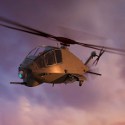 | Boeing unveils Army FARA attack copter design
Boeing revealed its U.S. Army Future Attack Reconnaissance Aircraft (FARA) design on March 3, the fourth company to put its helicopter plans in the running for a new military contract. Boeing envisions a thrust compounded single main rotor helicopter that boasts a six-bladed rotor system, tandem seating, a modular state-of-the-art cockpit, and more.
Read the full article. |
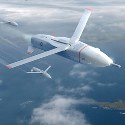 | Gremlin drones will be launched, retrieved mid-air
DARPA has completed the first flight test of its X-61A vehicle, part of its Gremlins program that aims to launch swarms of low-cost, reusable unmanned aerial systems from U.S. military planes and retrieve them mid-air. Gremlins could fill an advantageous design-and-use space between existing models of missiles and conventional aircraft.
Read the full article. |
|
| | Videos+: Technologies and inspiration in action | Gyroscopic stabilization of a hexapod
There are many optics and metrology-related applications that require a stable work surface in an unstable environment, whether that environment is vibrating, in an aircraft, on a vessel at sea, or elsewhere. Under normal conditions, the work surface is subject to these environmental disturbances. Hexapod motion platforms provide a good basis to compensate for motion in 6 degrees of freedom. Learn all about hexapods and see them in action in this extensive and informative tech blog from PI (Physik Instrumente).
Learn more and view the video. |
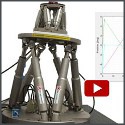 |
No need to stack springs to handle higher loads
The need to stack individual springs for higher loads is no longer necessary. Nested springs result in a spring rate that increases proportionately to the number of turns. They can exert tremendous forces, yet maintain the precision of a circular-grain wave spring. In many applications, Nested Wave Springs replace Belleville Springs, particularly in cases where a high-but-accurate force is needed.
Check out the Smalley video for more information. |
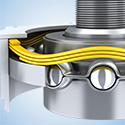 |
|
|